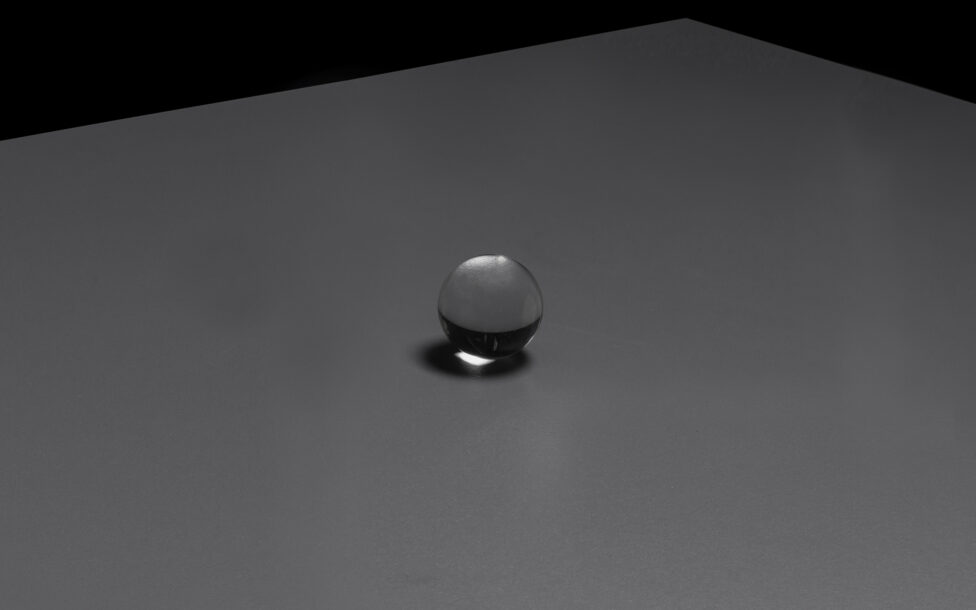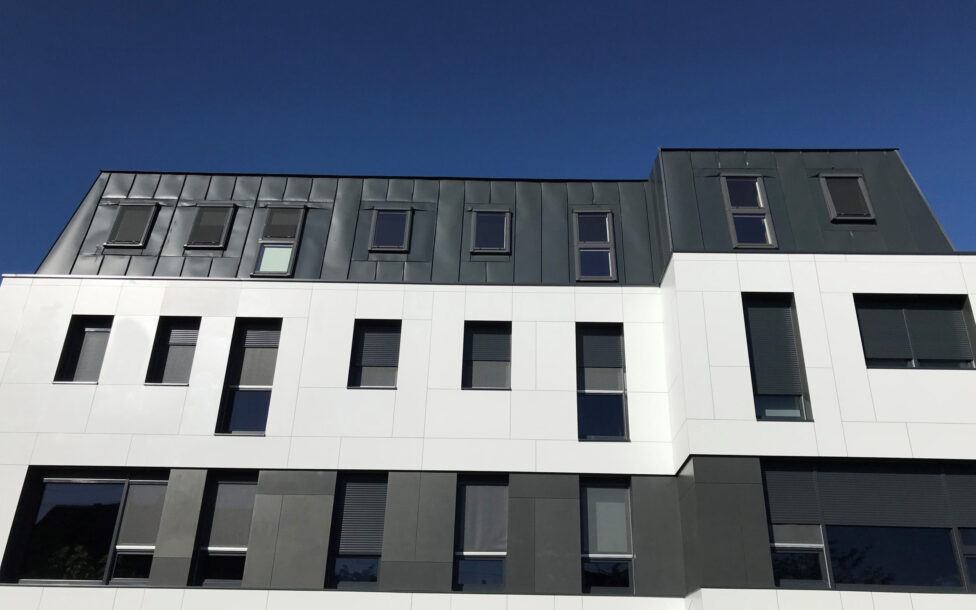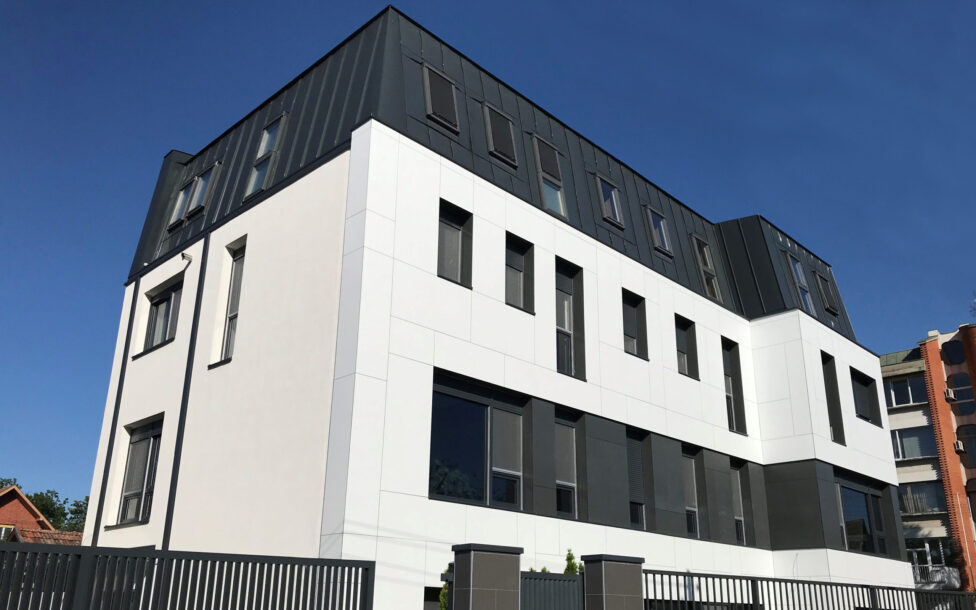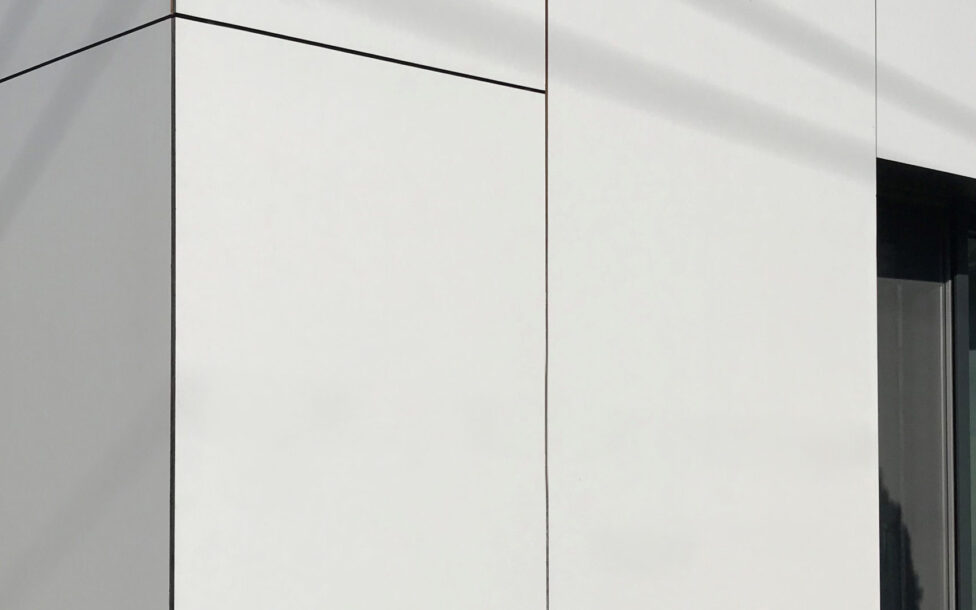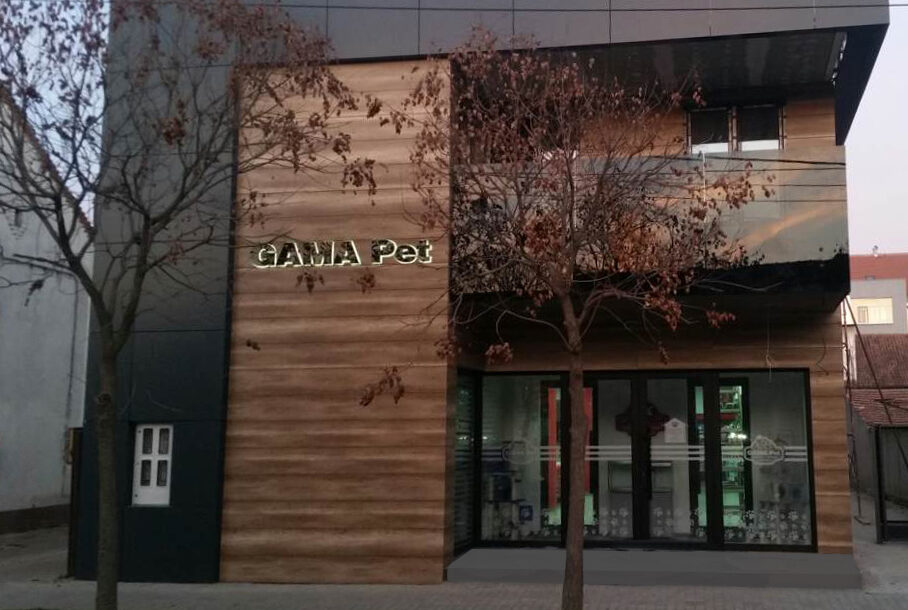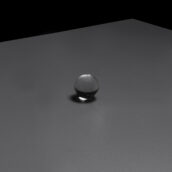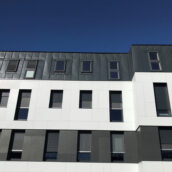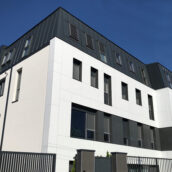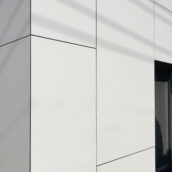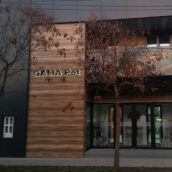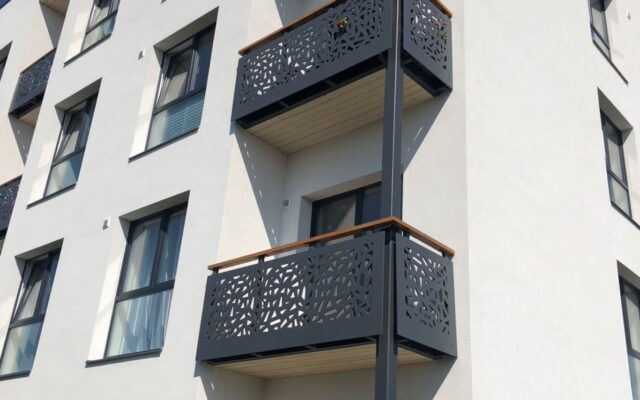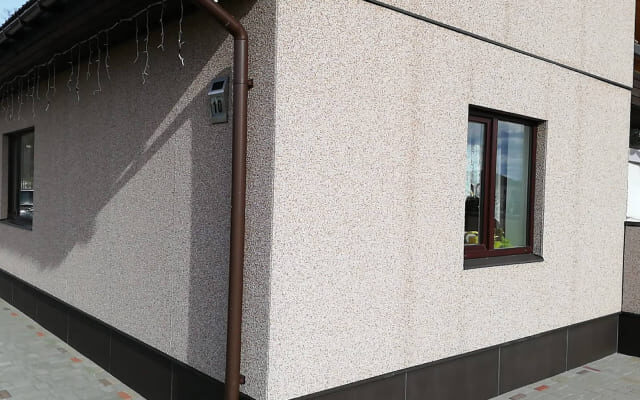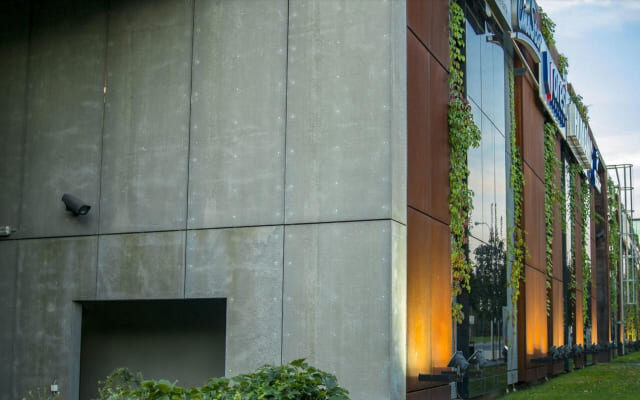ASD LAMINAT Exterior
ASD Laminat Exterior loksnes ir īpaši izturīgs kompozītmateriāls, kas ražots augstā temperatūrā zem liela spiediena. Materiāla kodols sastāv no ar fenola sveķiem piesūcināta, neapstrādāta šķiedras kraftpapīra uz koksnes bāzes slāņiem. Savukārt tā dekoratīvās virsmas ir izgatavotas no ar termoreaktīvajiem sveķiem impregnētiem celulozes papīra uz koksnes bāzes slāņiem, kas pastiprināti ar pret UV stariem izturīgu plēvi. Materiāls ir ļoti izturīgs, viegli kopjams un sniedz praktiski neierobežotas dizaina un dekora iespējas un risinājumus.
Produkta krāsas
ASD Exterior ir pieejams vairāk nekā 90 standarta dekoros un dizainos.
Lai iegūtu papildinformāciju, skatiet katalogu vai sazinieties ar mums.
GreenSaphire 1017
GreenSaphire 1017
PinkKunzite 1090
PinkKunzite 1090
NightBlue 1125
NightBlue 1125
SilverBrunia 1009
SilverBrunia 1009
WalnutButter 1096
WalnutButter 1096
LongmontStone 5124
LongmontStone 5124
LvivConcrete 5147
LvivConcrete 5147
Jadaite 5192
Jadaite 5192
AspenOak 3102
AspenOak 3102
BalmoreOak 3229
BalmoreOak 3229
GooseCoveOak 3145
GooseCoveOak 3145
EireChestnut2 3180
EireChestnut2 3180
Produkta izmēri
Standata izmēri Biezums
1300 mm x 3050 mm 6 mm | ~ 8.9 kg/m2
1000 mm x 2150 mm 8 mm | ~ 11.9 kg/m2
1220 mm x 2440 mm
Īpašības
- Izturīgs, ciets un ilgmūžīgs.
- Īpaši izturīgs pret laikapstākļu, ūdens, karstuma, sala un UV staru iedarbību.
- Energoefektīvs un videi draudzīgs, ja tiek izmantots kā fasādes apšuvuma materiāls.
- Viegli pārveidojams, apstrādājams, ātri uzstādāms un demontējams.
- Mitruma un siltuma kontrole, ja tiek izmantots kā fasādes apšuvuma materiāls.
- Uzlabota iekštelpu vides kvalitāte, ja tiek izmantots kā fasādes apšuvuma materiāls.
- Uzlabota akustika par 14 dB, ja tiek izmantots kā fasādes apšuvuma materiāls.
- Izcila triecienizturība.
- Antibakteriāls, ar hipoalerģiskām īpašībām.
- Izturīgs pret pelējumu, puvi un termītiem.
- Optimāla ugunsizturība, nekūst, nepil un nesprāgst.
Pielietojums
ASD Exterior ir lieliski piemērots vecāku ēku atjaunošanai, pievienojot papildu izolācijas slāni, kas ir lieliska, budžetam draudzīga metode esošo konstrukciju atkārtotai izmantošanai.
ASD Exterior ir paredzēts visiem āra darbiem. Papildus izmantošanai kā fasādes apšuvuma materiāls, to var izmantot arī jebkuram citam āra pielietojumam, piemēram, balkoniem, āra mēbelēm, saulessargiem, sofītiem, nojumēm, parapetiem, izkārtnēm, lieveņiem, balustrādēm, dekoratīviem žogiem, slēģiem un plašs citu ārējo pielietojumu klāsts.
Montāža
Dimensional Stability
As ASD Exterior Panels are robust and non-reactive, and of homogeneous, excellently dense, highly tensile nature, their pull-out strength is absolutely fantastic for fixings and fasteners. Cut edges, drilled holes and engraving the surface of the panels do not require any special treatment afterwards and the panels can be applied as they are. ASD Exterior Panels may shrink at low humidity levels as they lose moisture and, expand at high humidity levels as they absorb moisture. Hence, allowing the panels to acclimatize at their final destination both before their fabrication and installation is recommended. Before processing and installing, we recommend the panels to be left in a well-supported, ventilated, horizontal position for a period of 1 day per mm of thickness, consequently, allowing the panels to acclimatize for avoiding any deformation.
Please note, Thought must be given to this potential dimension change at the design and installation stage. (drawing here?)
Drilling
For drilling ASD Exterior panels, we recommend the use of drills for plastics. The drills must have a point angle of 60°- 80° instead of the normal 120° that is used for drilling metals. The feed speed of the drilling head and the pressure being applied must be gently lowered when approaching the point of breakthrough in order to prevent a breakout on the reverse side of the panel. In addition, for preventing breakouts, we recommend the use of a completely flat and stable underlay panel to be used such as plywood or chipboard. When blind boring, thought must be given to ensure that 1.5 mm of material remains between the hole and the reverse side of the panel. We do not recommend panels less than 8 mm for concealed fixing. Moreover, a high drilling speed is to be used to avoid any chipping. Screws into the edges are to be avoided in general. If a screw is to be positioned near an edge, we recommend that they are placed no closer to an edge than 75 mm to avoid splintering and breakouts.
Please note, Thought must be given to this potential dimension change at the design and installation stage.
Panel Thickness: 6 mm | 450 mm | 550 mm
2 Fixings in One Direction: 8 mm | 600 mm | 750 mm
3 Or More Fixings in One Direction: 10 mm | 750 mm | 900 mm |
Fabrication
Due to the high density of ASD Exterior panels, processing them is similar to the processing of hardwood panels. Tools that are designed to process hard materials should be used to process ASD Exterior panels. Worn out, improper and poorly maintained tools can result in chipping and/or localized heating and therefore in poor cuts. For a sound result we recommend the use of either a tungsten carbide tipping TCT or Polycrystalline Diamond tooling PCD. It is of great importance to avoid any vibration during processing and to keep the panels completely flat and stable. The feed speed must be optimized properly for smooth cuts. The larger the saw blades yield, smoother the cuts will be. We recommend the use of circular bench saw with blade diameter of 300 mm - 400 mm | 11.811 in - 15.748 in and at least with 96 teeth. For deburring the edges, a handheld router or a high-grade sand paper can be used. The decorative surface of the panel is where the tool should engage, the same rule being applicable to all types of machining tools. The higher the saw blade the better the top cut and the worse the bottom cut will be and vice versa. Breakout on the underside of the panels can be reduced by using a base- board of plywood or a hardboard beneath the ASD Exterior panels. We recommend the use of either a Trapezoidal flat tooth or an Alternate tooth for a smooth cut. In addition, a saw entry angle of 45° is optimal and recommended.
Please note: When processing ASD Exterior Panels with a CNC machine, it is a must to remove the transportation protection films beforehand as the transportation protection films may decrease the suction power of the CNC bed which can affect the stability of the panels therefore resulting an unintended outcome.
Transportēšana un uzglabāšana
ASD Exterior Panels should be handled with caution in order not to damage their edges and decorative surfaces. Any form of dirt or dust between the panels must be avoided as the stack weight of the panels itself can be a possible cause of damage albeit the excellent surface hardness and the transportation protection films. During transportation, it is substantial to use pallets of appropriate size to support the whole of the panel area. Pallets must be strong and stable enough to support their load without bending. When transporting stacks of panels with mechanical handling vehicles, pallets of proper size and rigidity should be used. Abrasion between the decorative faces should be avoided at any given time. Stacked panels should be secured to the pallet using steel or nylon straps in order to prevent slippage. When loading and unloading, thought should be given not to let the panels slide over each other to avoid any damage. The panels should be lifted by hand or using a lifting system with suction cups. Baseboards should be placed between the pallets and the bottom panels. The baseboards of the stacks must be dry and, they should be covered with a material impervious to water to act as a moisture barrier. The top panel of each stack should be covered with a weighted down cover board with sufficient weight to keep the panels flat. This cover board should be in contact with the whole surface area of the top panel. The cover board on top also should be covered with a material impervious to water to act as a moisture barrier. The panels should be stacked on top of each other on a completely flat surface. The same principles apply to cut-panel stacks as well. If stored incorrectly, panels may be permanently deformed. Temperature and climate differences on the surfaces of the panels should be avoided. In addition, the transportation protection films must be kept away from heat and direct sunshine. When the transportation protection films are to be removed, they must be removed from both sides simultaneously in order to secure the dimensional stability of the panels.
Tehniskie dati
| Fizikālas īpašības | Vienība | Vērtība | Standarts |
| Blīvums | kg/m³ | ≥1,35
|
ISO 1183 |
| Izturība pret slapjiem apstākļiem 65ºC siltā ūdenī pēc 48 stundām | EN 438-2 | ||
| Apjoma pieaugums/palielināšanās | % | ≤4
|
|
| Izskats | Vērtējums | ≥5 | |
| Optiskas īpašības | Vienība | ||
| Izturība pret UV stariem | Pustoņu skala vai Vērtējums | 4-5 (pēc 1500 stundu iedarbības | EN 438-2 |
| Mehāniskās īpašības | Vienība | ||
| Elastības modulis | N/mm² | ≥9000 | EN ISO 178 |
| Stiepes izturība | Mpa | ≥60 | EN ISO 527-2 |
| Lieces izturība | Mpa | ≥80 | EN ISO 178 |
| Triecienizturība pret liela diametra lodi |
EN 438-2 |
||
| Faktiskais nomešanas augstums | mm | 1800 | |
| Reģions | Ugunsizturības klase | Standarts | |
| Eiropas Savienība | FR tips B S1 d0 | EN 13501-1 | |
| Standarta tips D S2 d0 | EN 13501-1 | ||
